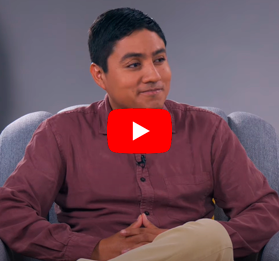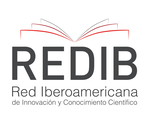Level of functionality and quality of life in a rural population of elderly adults in a comprehensive center for the elderly in Lima, Peru.
DOI:
https://doi.org/10.20453/rhr.v5i1.4257Keywords:
Personal autonomy, activities of daily living, elderly, rural populationAbstract
The morphophysiological changes produced by aging alter the optimal functionality (personal autonomy) of older adults, undermining the performance of their ABVD, a fact that affects their quality of life. Objective: To determine the association of the level of functionality and quality of life in older adults of the Comprehensive Center for the Elderly (CIAM) San Antonio de Huarochirí. Material and Methods: Observational, analytical cross-sectional study. Applied the Barthel Index to measure functionality and the SF 36 questionnaire for quality of life. Results: 156 older adults (OA) were interviewed, predominantly female with 61.5%, average age was 71.9 years. The results on the level of functionality showed that 0.6% presented total dependence, 3.2% severe dependence, 48.08% moderate dependence, 15.4% low dependence and 32.7% with independence. Regarding quality of life, 57.1% said they had worse and 42.9% better quality of life. A significant association was found between functional level and quality of life using the chi square test (p < 0.005). Conclusion: The study revealed that in the AM of the CIAM of San Antonio de Huarochirí moderate dependency predominates (48.1%) and that 42.9% stated they have “better quality of life”; therefore we conclude that the higher the functional level, the “better quality of life”.
Downloads
References
Peru 21. Los Mayores de 60 años ya son el 11.9% de la población, según INEI. Perú: Perú 21; 2021.
Sánchez-Gavito A. Manual de prevención y autocuidado para las personas adultas mayores. Ciudad de México: Dirección General de Equidad y desarrollo Social; 2020.
Fernández S, Gonzalez A, Castillo Y. Funcionalidad en adultos mayores y su calidad de vida. Rev Espec Méd-Quirurgicas. 2009;14(4):161-75.
Centro Integral del Adulto Mayor. CIAM. Lima; Municipalidad Distrital de la Molina; 2021.
Gutiérrez L. Principales problemas médicos en los ancianos, Seminario: La situación de los adultos mayores en el DF: Elementos conceptuales para un modelo de atención. Ciudad de Mexico: Secretaría de Desarrollo Social-Instituto de Investigaciones Sociales UNAM; 1999. p. 31.
Aponte V. Calidad de vida en la tercera edad. Ajayu. 2015;13(2).
Varela L. Salud y calidad de vida en el adulto mayor. Rev Peru Med Exp Salud Pública. 2016; 33 (2).
Cardona D, Estrada A, Agudelo H. Calidad de vida y condiciones de salud de la población adulta mayor de Medellín. Biomédica. 2006; 26:206-15.
Tsai SY, Chi LY, LeeCH, ChouP. Health-related quality of life as a predictor of mortality among
community-dwelling older persons. Eur J Epidemiol. 2007; 22(1): 19-26.
Instituto Nacional de Estadística e Informática. Estadística PAM. Lima: Instituto Nacional de Estadística e Informática; 2015.
Organización Mundial de la Salud. Informe sobre salud del mundo. Ginebra: Organización Mundial de la Salud; 2019.
Ware JE Jr, Sherbourne C. The MOS 36-item short-form health survey (SF-36) (I). Conseptual framework and item selection. Med Care. 1992; 30:473-83.
Salazar F, Bernabé E. The Spanish SF-36 in Peru: Factor Structure, Construct Validity and Internal Consistency. Asia-Pacific Journal of Public Health. 2012. Doi: 10.1177/1010539511432879
Pacci S, De la Cruz F, Alzamora C, Nureña N, Olortegui Y, Fernandez C. Impacto de la rehabilitación cardiaca en la calidad de vida de los pacientes del Instituto Nacional cardiovascular del Perú. Revista peruana de epidemiologia. 2011; 15(2).
Varela L. Salud y calidad de vida en el adulto mayor. Revista Perú Med Exp Salud Publica. 2016; 33(2).
Contreras C, Condor I, Atencio J, et al. Prevalencia de demencia y funcionalidad en una clínica geriátrica de Huancayo, Perú, 2016-2017. An Fac Med. 2019; 80(1):51-55.
Meza G. Capacidad funcional para desarrollar actividades de la vida diaria, según edad y sexo en adultos mayores que acuden a un centro de atención al adulto mayor. Villa María del Triunfo – 2016. Tesis de licenciatura. Lima, Perú: Universidad Nacional Mayor de San Marcos; 2017.
Figueroa L. Nivel de dependencia, autocuidado y calidad de vida del adulto mayor. Enfermería universitaria. 2016; 13(3):159-165.
Shirley R. Calidad de vida en adultos mayores en Cartagena, Colombia. Rev Salud Pública. 2017; 19 (4): 549-554.
Leite M. Capacidad funcional y nivel cognitivo de adultos mayores residentes en una comunidad en el sur de Brasil. Salud y calidad de vida en el adulto mayor. Revista electrónica trimestral de enfermería. 2015.
Espinoza Y. Hoyos Luisa. La calidad de vida y su relación con el grado de funcionalidad de adultos mayores que asisten a un centro de salud, octubre- diciembre Lima-2018. Tesis de licenciatura. Lima, Perú: Universidad Norbert Wiener; 2019.
Muñoz L, Vargas M. Funcionalidad y calidad de vida del adulto mayor institucionalizado y no institucionalizado. Tesis de licenciatura. Bucaramanga, Colombia: Universidad Cooperativa de Colombia; 2019.
Cuadra A, Medina C, Francisco E, Salazar K. Relación de bienestar psicológico, apoyo social, estado de salud física y mental con calidad de vida en adultos mayores de la ciudad de Arica. Límite. Revista Interdisciplinaria de Filosofía y Psicología. 2016; 11(35): 56-67
Downloads
Published
How to Cite
Issue
Section
License
All articles published in the Revista Herediana de Rehabilitación are under a Creative Commons Reconocimiento 4.0 International license.
The authors retain the copyright and grant the journal the right of first publication, with the work registered with the Creative Commons License, which allows third parties to use what is published whenever they mention the authorship of the work, and to the first publication in this magazine.
Authors can make other independent and additional contractual agreements for the non-exclusive distribution of the version published in this journal, provided they clearly indicate that the work was published in this journal.
The authors can file in the repository of their institution:
The research work or thesis of degree from which the published article derives.
The pre-print version: the version prior to peer review.
The Post-print version: final version after peer review.
The definitive version or final version created by the publisher for publication.











 Esta obra está bajo una
Esta obra está bajo una 